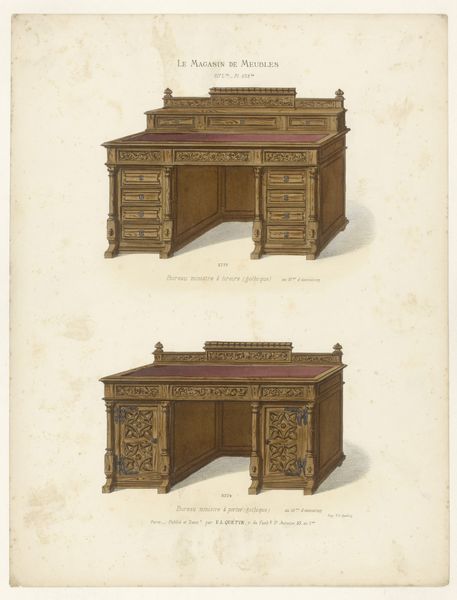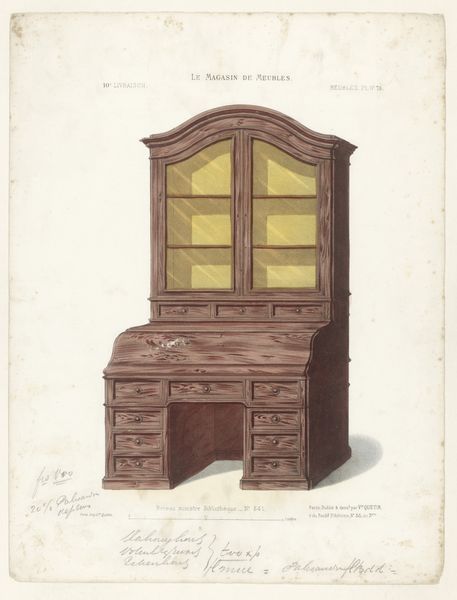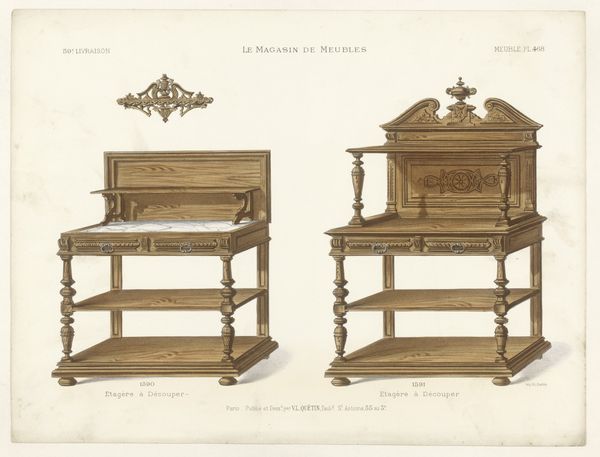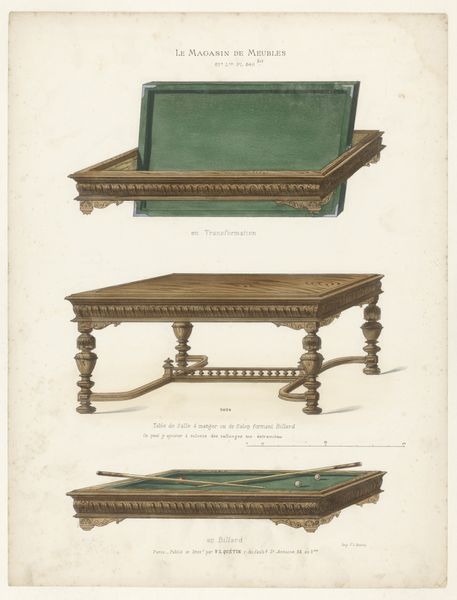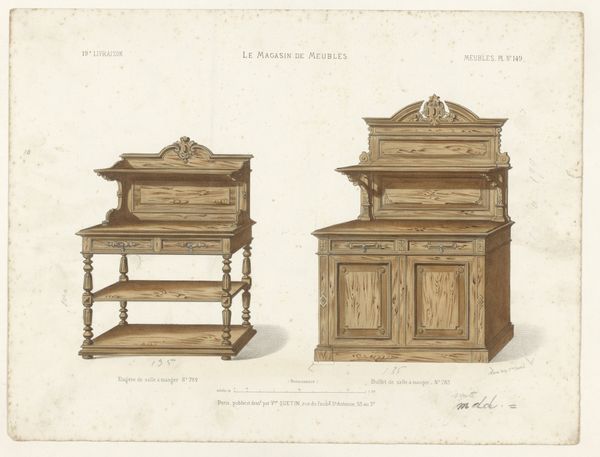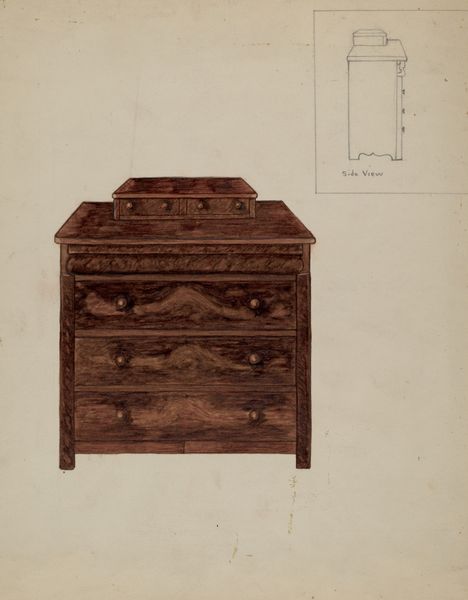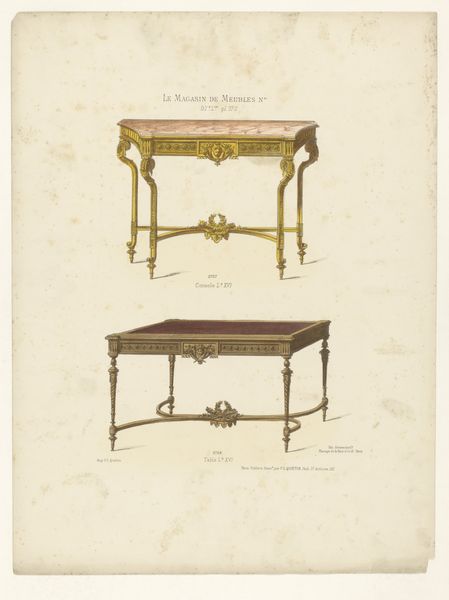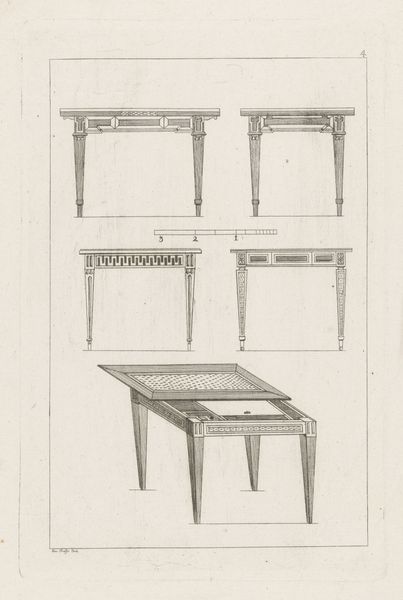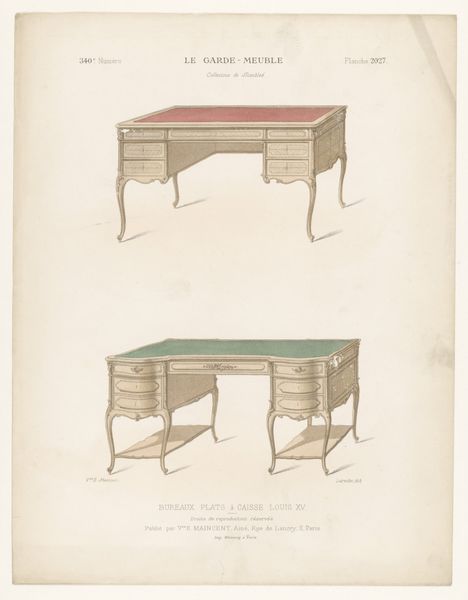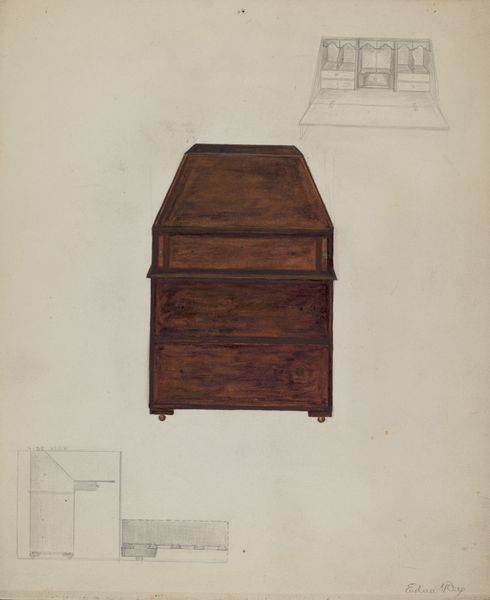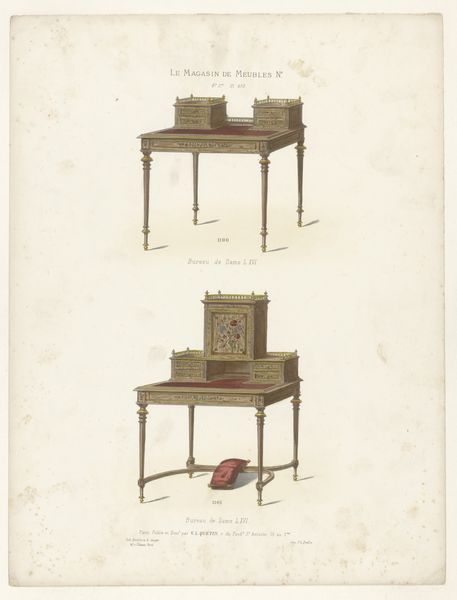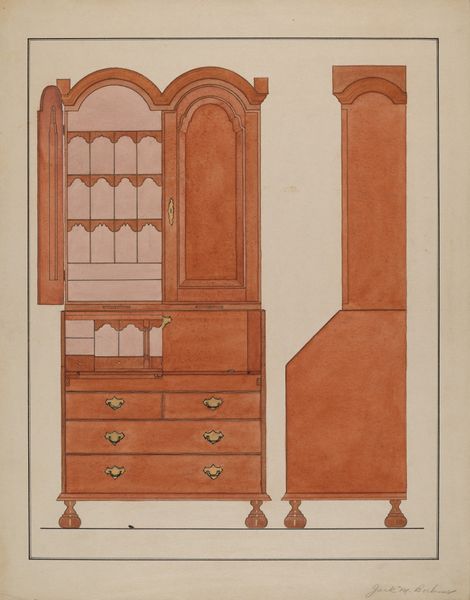
Dimensions: height 358 mm, width 274 mm
Copyright: Rijks Museum: Open Domain
Curator: This engraving, titled "Twee grote bureaus," which translates to "Two Large Desks," dates back to before 1904, crafted by an anonymous artist. Its primary subject is, unsurprisingly, two quite elaborate desks rendered in meticulous detail. Editor: My immediate reaction is a sense of...hierarchy. The bottom desk, rendered in severe gray tones, seems more imposing than the warmer, wooden one above it. It evokes images of officialdom, paperwork, and maybe a hint of bureaucratic rigidity. Curator: That’s an interesting observation. Note how both desks showcase classical elements - the wreaths, the symmetrical arrangement of drawers and the stylized pilasters. The desks speak to a desire to legitimize commerce or industry with a veneer of tradition. Does this language indicate to you that people want to establish themselves with traditional imageries? Editor: Absolutely, a calculated attempt to imbue commercial activities with the prestige and authority associated with established social structures. But what does it mean that one is darker and heavier, and one is lighter? To me the weightiness is clearly associated with power. The lighter wood implies the desk has to be in a domestic place. This begs the question what kind of furniture shop the poster aims to advertize? Is that because woman will occupy it more often and hence, requires something softer? Curator: That opens interesting symbolic possibilities when you consider what those drawers might hold. Perhaps private correspondence versus official documents. They are gendered based on the color and shape indeed. In any case both examples have these tiny knobs repeated—acting like small guardian figures controlling the secrets within each level. Editor: Right! I would have overlooked those details. Given its classification as both "genre painting" and academic art, one cannot disregard gender aspects as well. We may be seeing a representation of spaces where certain kinds of labor and decisions are legitimized based on class and gender dynamics of the period. What type of customer they wish to engage for sales and future business transactions based on their social status and traditional class dynamics is what the company wants to express. Curator: So the drawing operates on different registers at once, from a simple furniture advertorial, to also being encoded with societal values. We could see the desks less as utilitarian object, but containers of social narratives being reproduced by Anonymous? Editor: Precisely! The visual details invite an interrogation beyond just functionality, encouraging an analysis of the societal underpinnings embedded within these 'simple' drawings. This would be great to explore this from the domestic labor perspective.
Comments
No comments
Be the first to comment and join the conversation on the ultimate creative platform.
